Role of caloric homeostasis and reward in alcohol intake in Syrian golden hamsters
- PMID: 20688091
- PMCID: PMC2957184
- DOI: 10.1016/j.physbeh.2010.07.019
Role of caloric homeostasis and reward in alcohol intake in Syrian golden hamsters
Abstract
The Syrian golden hamster drinks alcohol readily, but only achieves moderate blood alcohol levels, and does not go through withdrawal from alcohol. Because the hamster is a model of caloric homeostasis, both caloric content and reward value may contribute to the hamster's alcohol consumption. The current study examines alcohol consumption in the hamster when a caloric or non-caloric sweet solution is concurrently available and caloric intake in the hamster before, during, and after exposure to either: alcohol, sucrose or saccharin. In Experiments 1 and 2, hamsters were given access to alcohol (15% v/v) and water; once alcohol consumption steadied, a bottle containing an ascending concentration of sucrose (99-614 mM) or saccharin (2-10 mM), or water was added. In Experiment 3, hamsters were given access to alcohol (15% v/v), sucrose (614 mM), saccharin (4 mM), or a second water bottle for 14 days. After the second bottle was removed, measurements continued for 14days. Sucrose exposure suppressed alcohol consumption at concentrations lower in calories than the alcohol solution. Saccharin exposure failed to suppress alcohol consumption. Exposure to sucrose and alcohol but not saccharin decreased food intake. Decreased alcohol consumption in response to a caloric sweetener and decreased food intake during alcohol exposure support that alcohol consumption by the hamster is mediated by caloric content. However, suppression of alcohol intake by a sucrose solution of lower caloric content and the equivalent intake of individual alcohol, sucrose and saccharin solutions support a role for reward value in alcohol consumption.
Copyright © 2010 Elsevier Inc. All rights reserved.
Figures
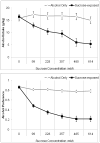
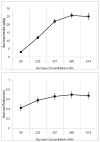
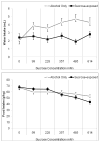

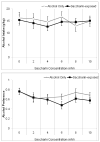
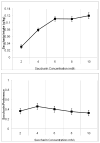


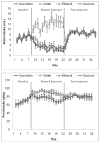

References
-
- DiBattista D. Voluntary ethanol consumption and obesity in golden hamsters. Physiology & behavior. 1986;36:41–5. - PubMed
-
- Green AI, Chau DT, Keung WM, Dawson R, Mesholam RI, Schildkraut JJ. Clozapine reduces alcohol drinking in Syrian golden hamsters. Psychiatry Res. 2004;128:9–20. - PubMed
-
- DiBattista D, McKenzie TL, Hollis-Walker L. Cholecystokinin reduces ethanol consumption in golden hamsters. Alcohol. 2003;29:173–81. - PubMed
-
- Piercy KT, Myers RD. Tomato juice, chocolate drink, and other fluids suppress volitional drinking of alcohol in the female Syrian golden hamster. Physiol Behav. 1995;57:1155–61. - PubMed
Publication types
MeSH terms
Substances
Grants and funding
LinkOut - more resources
Full Text Sources
Medical

